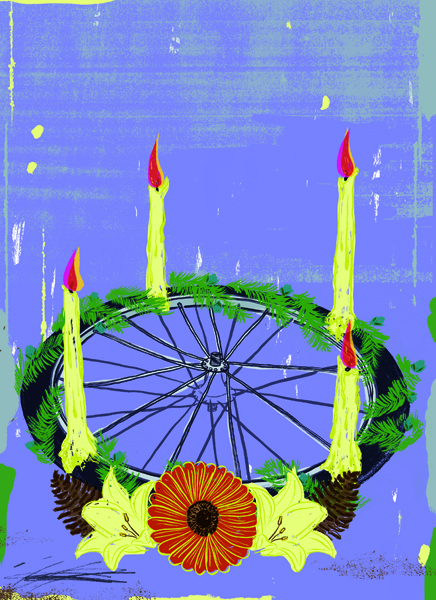 by Dee Dee Risher
by Dee Dee Risher
Even though I’m not a big consumer, from mid-November well into January, I feel like a recovering alcoholic stocking a liquor store. I’ve painstakingly retrained my U.S. consumer brain to evaluate my needs and wants. I have quelled my inner bargain hunter and nurtured instincts to invest in long-term ecological sustainability instead of planet exploitation. But I know how tenuous my recovery is. The quest for the bargain is a powerful cultural lure. And everyone knows that if you need to buy stuff, this is the time to get the rock-bottom deal.
Everywhere we turn, clamoring voices tell us what we want. They offer us things that they assure us will make our lives and the lives of those we love complete. They are ready to exploit any insecurity and promise to redeem all sad memories and losses. But at the core, they are incapable of telling us what we really want.
What is it that we really yearn for? What are the good gifts we can give one another, ourselves and this aching world? To answer that, we will have to turn from the lights, the mall, the frenzy.
Whether or not we feel connected to these traditions, we can hardly escape the many mid-winter festivals which are core to human culture—Solstice, Hanukkah, Advent and Christmas, Chinese New Year (often in mid-February). All seem rooted in a primitive desire to reassure humans that the great light of the sun would return, and the cycle of seed and harvest would continue.
It is a deep irony that today, long past the era of superstitious fear that human rituals are responsible for wooing back the sun each year, fears about the death of the natural environmental cycle are suddenly all too real. When it comes to the future of our planet and its cycles, many of us balance on the cusp of fear and hope. We dream of a future that can sustain planetary life as we know it even as we fear drastic repercussions if our culture buries its affluent consumer head in the sand.
My own tradition, Advent, is rooted in a powerful metaphor. Originally, the Advent wreath was made from the wheel of a medieval farm wagon—removed, brought indoors, and festooned with greens and lights. What would happen if I followed suit in 21st century fashion, and removed, say, the front passenger tire from our family car? My consumer life would downshift three gears. I would have to pay a completely different kind of attention to my true yearnings. (One year, we rolled a big tire inside and, as a symbolic offering, threw on it all the things that utterly distracted us from our deepest wants—a glittering pile of iPhones, BlackBerrys, videogames and credit cards.)
When I listen, our yearnings are remarkably similar. We desire relationship, community and a place to stand. We wish our work and life to have meaning. These are precisely the things that the sustainability movement is trying to rebuild—local economies structured around authentic socioeconomic ties.
However you celebrate this season, begin by knowing what you want to live toward. Set aside some quiet spaces to think about what you most deeply honor and love. How can you, in this season, live toward those things?
There are a hundred ways to incarnate our dreams of a healed environment and revitalized communities. This is precisely the season to chart some new and intentional paths.


